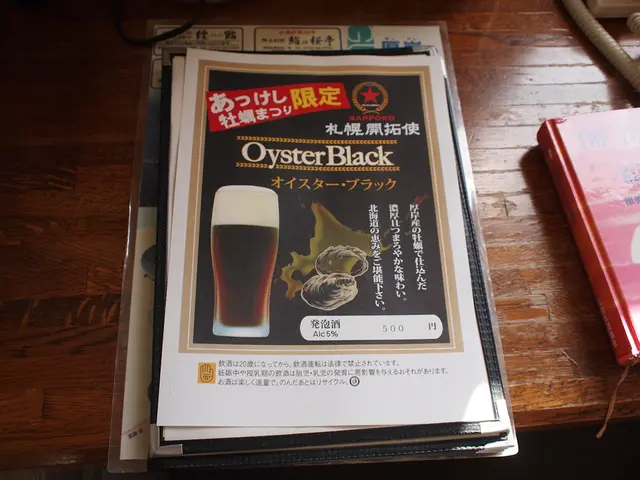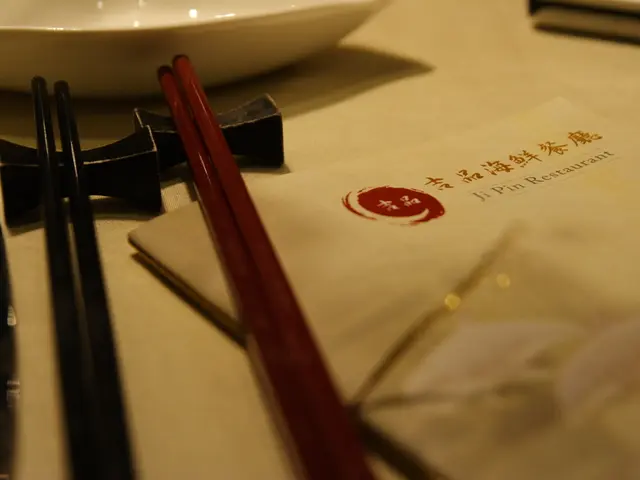Mastering the Art of Theft in Poker: Achieving Success on the Brink with a Limited Budget
In the high-stakes world of poker tournaments, understanding the intricacies of Game Theory Optimal (GTO) strategy becomes crucial, especially when the money bubble is near. This article focuses on the short-stacked button's approach to stealing, a tactic that can significantly impact chip accumulation and survival.
On low, disconnected flops like 8♦5♥3♥ and connected low flops like 8♦5♥4♥, the button (BTN) is in an awkward spot due to ICM pressure. However, the key is understanding how a tight opening range creates fold equity, even when the actual hand isn't all that strong. GTO strategy advises short-stacked players to steal from the button near the money bubble by timing their aggression and exploiting opponents' tendencies, particularly focusing on widening their stealing range when opponents are over-folding to three-bets.
In Ace-high flops like A♠6♦2♦, the button (BTN) has a major equity and nuts advantage due to their range being packed with AxXx. On the other hand, on boards like A*♠Q♥2♦, the button (BTN) has an equity edge but continuation-bets less often due to hands like QxJx and JxJx having showdown value but not wanting to get raised.
The Big Blind defends widely, folding only small, disconnected offsuit hands. On low, disconnected flops like 8♦5♥3♥ and connected low flops like 8♦5♥4♥, the big blind (BB) leads with their entire range. In such situations, the button (BTN) should consider checking back their entire range as an exploit.
When called, the postflop play should change across different board textures based on the ICM-heavy preflop setup. The button (BTN) should leverage the stronger hands in their range to protect the weaker ones. The Big Blind, as the covering stack, is getting great odds to call and has less ICM risk.
It's important to note that the short-stacked button is in an awkward spot due to the ICM pressure. Folding has a positive EV, and any raise must be more +EV to justify the risk. Poker pro Andrew Brokos discusses stealing from the button as a short stack near the money bubble in a GTO Wizard article.
To fully grasp the specific solver outputs, hand charts, and flop-by-flop breakdowns, one can read the full piece at GTO Wizard. The strategic framework centers on selective, timely aggression tuned to exploit opponent tendencies within a GTO-informed but flexible approach. This guidance is grounded in GTO-informed principles but also emphasizes adapting dynamically to opponents' actual play rather than rigidly sticking to theoretical ranges, a nuance that is especially important near the bubble in large-field tournaments.
However, it's important not to go broke on the bubble. While it's crucial to steal blinds and antes effectively, it doesn't mean immediately waving the white flag when you miss the flop. The button has 18 big blinds and faces blinds of 41bb and 26bb in a 1,000-player MTT with an average stack of about 35bb. Incorporating Independent Chip Model (ICM) considerations helps adjust aggression to maximize tournament equity rather than just chip accumulation, which is particularly important near the bubble where losing chips risks missing min-cash payouts.
In conclusion, mastering the art of stealing near the money bubble as a short-stacked button requires a delicate balance of GTO principles, ICM awareness, and exploitation of opponent tendencies. Timing aggression, understanding board textures, and adapting to opponents' play are key elements in this strategic approach.
Short-stacked button players can benefit from stealing near the money bubble by using timed aggression to exploit opponents' tendencies, as discussed by poker pro Andrew Brokos in a GTO Wizard article. In low, disconnected flops like 8♦5♥3♥ and connected low flops like 8♦5♥4♥, the button should consider checking back their entire range as an exploit when the big blind leads with their entire range. It's crucial to note that stealing blinds and antes effectively is important, but avoiding going broke on the bubble is equally so, as losing chips risks missing min-cash payouts, especially near the bubble in large-field tournaments.








